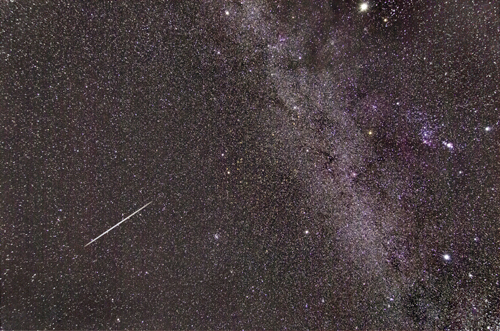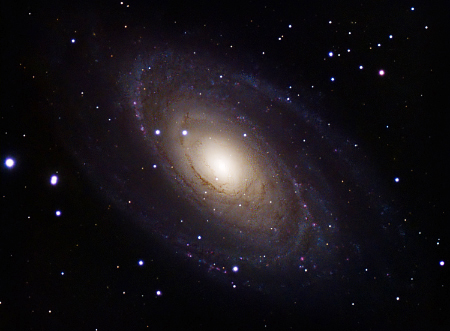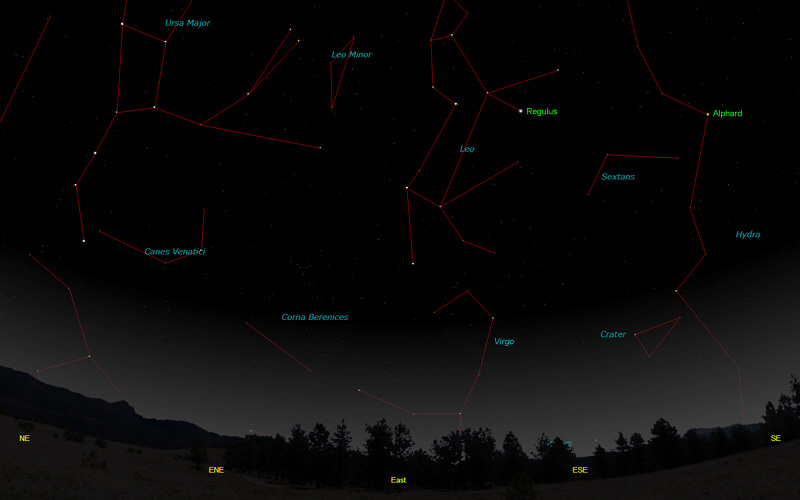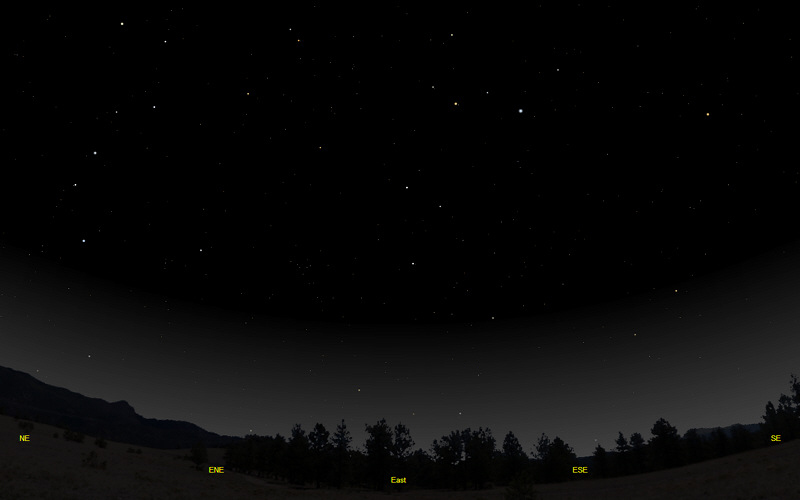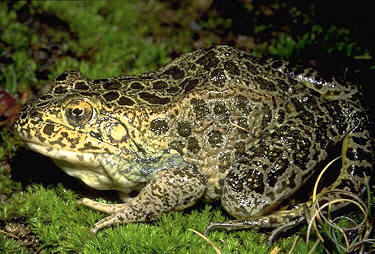The purpose of this feature is to give scout leaders, educators and naturalists an idea of some of the natural events coming up each month. We will try to cover a variety of natural events ranging from sky events to calling periods of amphibians, bird and mammal watching tips, prominent wildflowers and anything else that comes to mind. We will also note prominent constellations appearing over the eastern horizon at mid-evening each month for our area for those who would like to learn the constellations. If you have suggestions for other types of natural information you would like to see added to this calendar, let us know! Note: You can click on the hyperlinks to learn more about some of the featured items. To return to the Calendar, hit the "back" button on your browser, NOT the "back" button on the web page. All charts are available in a "printer friendly" mode, with black stars on a white background. Left clicking on each chart will take you to a printable black and white image. Please note that images on these pages are meant to be displayed at 100%. If your browser zooms into a higher magnification than that, the images may lose quality. Though we link book references to nationwide sources, we encourage you to support your local book store whenever possible. Notes and Images From January 2013 Last month we showed a time-lapse video of the Geminid meteor shower on December 14th. This month we decided to take 122 still frames from that video and combine them into single image that has a total exposure time of 40 minutes. We placed a frame with a single bright meteor at the top of the image stack. The faintest stars visible are about 100 times fainter than those visible with the naked eye alone. The winter milky way shows up well, along with many silhouetted dark nebulae. You can click on the image to see a much larger high-resolution version of the image. In a native American myth the milky way marks the path of departed souls on their journey to the hereafter. The path is illuminated by their distant campfires. When we look at the milky way in this part of the sky we're looking into space thorough the outer spiral arms of our galaxy. The dark dusty structures that we see in silhouette are the same type of structures that we see when we look at an "edge on" galaxy like NGC 4565, except we're seeing them from the inside out.
Sky Events for February 2013: Evening Sky: Jupiter shines brightly in the night sky during January. Look for it in Taurus near the bright star Aldebaran. It will be the brightest star-like object in the sky. Binoculars, if held steady, will show the four Galilean moons when they are not transiting the planet or being eclipsed. Mercury reaches greatest elongation from the Sun on February 16th. Look for it low in the southwest during the second and third weeks of the month. If you have binoculars, you may be able to pick faint Mars out of the twilight glow below Mercury about 30 to 40 minutes after sunset. Morning Sky: Saturn rises about 12:10am on February 1st in Libra. Saturn's rings have opened up to 19.3 degrees of tilt, their maximum tilt for the year. To get the best telescopic views wait until the planet has climbed higher in the sky just before dawn. All times noted in the Sky Events are for Franklin, Tennessee and are Central Standard Time.
Constellations: The views below show the sky looking east at 9:30pm CST on February 15th. The first view shows the sky with the constellation outlines and names depicted. Star and planet names are in green. Constellation names are in blue. The second view shows the same scene without labels. Leo, the Lion, is prominent with its bright star Regulus. Use Regulus and Leo to guide you to the faint constellation of Sextans, the Sextant. Conspicuous in the northeast is Ursa Major, the Great Bear. Near the "snout" of the bear lie two great galaxies, Messier 81 and Messier 82. These can be seen as faint smudges in binoculars on a clear night, and observers in pristine skies have even reported seeing a glimpse of M81 with the naked eye. The constellations of Coma Berenices, Berenice's Hair, Virgo, the Virgin and Crater, the Cup are all just making their way above the horizon and will be seen better next month. If you can't wait, you can always stay up a little later and watch them as they climb higher above the horizon.
On Learning the Constellations: We advise learning a few constellations each month, and then following them through the seasons. Once you associate a particular constellation coming over the eastern horizon at a certain time of year, you may start thinking about it like an old friend, looking forward to its arrival each season. The stars in the evening scene above, for instance, will always be in the same place relative to the horizon at the same time and date each February. Of course, the planets do move slowly through the constellations, but with practice you will learn to identify them from their appearance. In particular, learn the brightest stars (like Regulus in the above scene looking east), for they will guide you to the fainter stars. Once you can locate the more prominent constellations, you can "branch out" to other constellations around them. It may take you a little while to get a sense of scale, to translate what you see on the computer screen or what you see on the page of a book to what you see in the sky. Look for patterns, like the stars of the "Big Dipper." The earth's rotation causes the constellations to appear to move across the sky just as the sun and the moon appear to do. If you go outside earlier than the time shown on the charts, the constellations will be lower to the eastern horizon. If you observe later, they will have climbed higher. As each season progresses, the earth's motion around the sun causes the constellations to appear a little farther towards the west each night for any given time of night. If you want to see where the constellations in the above figures will be on March 15th at 9:30pm CST, you can stay up till 11:30pm CST on the February 15th and get a preview. The westward motion of the constellations is equivalent to two hours per month. For instance, if you want to see what stars will be on your eastern horizon on May 15th at 9:30pm CST (3 months from now), you would need to get up at 3:30am CST on February 15th (3 months times 2 hours/month = 6 hours). Recommended: Sky & Telescope's Pocket Star Atlas is beautiful, compact star atlas. A good book to learn the constellations is Patterns in the Sky, by Hewitt-White. You may also want to check out at H. A. Rey's classic, The Stars, A New Way to See Them. For skywatching tips, an inexpensive good guide is Secrets of Stargazing, by Becky Ramotowski. A good general reference book on astronomy is the Peterson
Field Guide,
A Field Guide to the Stars and Planets, by Pasachoff. The book retails for around $14.00. Starry Night has several software programs for learning the night sky. Visit the Starry Night web site at www.starrynight.com for details. The Virtual Moon Atlas is a terrific way to learn the surface features of the Moon. And it's free software. You can download the Virtual Moon Atlas here. Cartes du Ciel (described in the monthly notes above) is a great program for finding your way around the sky. It is also free, and can be downloaded here. Apps: We really love the Sky Safari 3 Pro application described here. For upcoming events, the Sky Week application is quite nice. Both apps are available for both I-phone and Android operating systems.
Amphibians:
The amphibian season continues to build in February. One trick to finding amphibians in winter is to go out on mild (50 degrees Fahrenheit or warmer) rainy nights. For safety, it is important that you have another person with you to help watch for traffic as you slowly drive the back roads. Look for things that cross the road in front of you and stop frequently and listen. Early breeding frogs like Upland Chorus Frogs, Spring Peepers and Wood Frogs are already calling by the first of the month. On warmer nights listen for Southern Leopard Frogs. Spotted Salamanders and Tiger Salamanders also breed in January and February, and the eggs of both can often be found this time of year. Towards the end of the month, given mild temperatures, you can sometimes hear American Toads beginning to call. In west Tennessee, Crawfish Frogs give their loud snoring calls starting in late February and continuing on into early March. At higher elevations, listen for Mountain Chorus Frogs towards the end of the month. Remember that on mild nights you may find frogs and toads out foraging that you do not hear until later in the season.
Birds: Many times when we have been out looking for amphibians in February we've witnessed courtship flights of the American Woodcock. Listen for the "peent" call at dusk and watch as the male Woodcock spirals upward till it's almost out of sight, then dives back to the ground, twisting and turning. For more about watching American Woodcocks see, "The Woodcock's Call." Red-Shouldered Hawks mate as early as February in Tennessee. Watch for courtship activities of these and other hawks. Stick Nests: With the leaves down, this is a great time of year to find raptor stick nests. I make notes of all the nests I find and then periodically check them to see if anyone has "moved in." Many times Great Horned Owls make use of an old Red-Tailed Hawk's nest from the previous year. The owls can already be incubating eggs in January. Of the hawks, Arthur Cleveland Bent, in his "Life Histories of North American Birds of Prey," writes, "[Red-tailed Hawks]...begin their nest building late in February or early in March; I have seen a wholly new nest half completed and decorated with green pine twigs and down as early as February 18th, over a month before the eggs are laid...Typical nests are from 28 to 30 inches in outside diameter, the inner cavity being 14 or 15 inches wide and 4 or 5 inches deep...The nests are well made of sticks and twigs, half an inch or less in thickness, and neatly lined with strips of inner bark, of cedar, grapevine or chestnut, usnea, and usually at least a few green sprigs of pine, cedar or hemlock. Some nests are profusely and beautifully lined with fresh green sprigs of white pine, which are frequently renewed during incubation and during the earlier stages of growth of the young...They "stake out their claim" late in February or early in March...by marking the nest they propose to use with a sprig of green pine...I believe that the birds prefer to build a new nest each year, but they sometimes use the same nest for consecutive years..." Bent was writing about the Red-Tail Hawks in New England, so our times could be a little earlier. You probably have already put out your bird feeders, but if you havenít you're missing out on a lot of good looks at winter feeder birds. This is a great time of year to start learning your birds. Watch and listen for winter residents such as White-throated and White-crowned Sparrows, Yellow-bellied Sapsuckers, Red-breasted Nuthatches, Golden-crowned Kinglets and Brown Creepers. Recommended: The Sibley Guide to Birds, David Allen Sibley The Sibley Guide to Birds of Eastern North America, David Allen Sibley An inexpensive guide for beginners is the Golden Guide for Birds.
Archives (Remember to use the back button on your browser, NOT the back button on the web page!) Natural Calendar December 2012 Natural Calendar November 2012 Natural Calendar September 2012 Natural Calendar February 2012 Natural Calendar December 2011 Natural Calendar November 2011 Natural Calendar September 2011 Natural Calendar February 2011 Natural Calendar December 2010 Natural Calendar November 2010 Natural Calendar September 2010 Natural Calendar February 2010 Natural Calendar December 2009 Natural Calendar November 2009 Natural Calendar September 2009 Natural Calendar February 2009 Natural Calendar December 2008 Natural Calendar November 2008 Natural Calendar September 2008 Natural Calendar February 2008 Natural Calendar December 2007 Natural Calendar November 2007 Natural Calendar September 2007 Natural Calendar February 2007 Natural Calendar December 2006 Natural Calendar November 2006 Natural Calendar September 2006 Natural Calendar February 2006
Natural Calendar
December 2005
Natural Calendar
November 2005
Natural Calendar
September 2005
Natural Calendar
February 2005
Natural Calendar
December 2004
Natural Calendar
November 2004
Natural Calendar
September 2004
Natural Calendar
February 2004
Natural Calendar
December 2003
Natural Calendar
November 2003
Natural Calendar
September 2003 Natural Calendar February 2003 Natural Calendar December 2002 Natural Calendar November 2002 Nature Notes Archives: Nature Notes was a page we published in 2001 and 2002 containing our observations about everything from the northern lights display of November 2001 to frog and salamander egg masses. Night scenes prepared with The Sky Professional from Software Bisque All images and recordings © 2013 Leaps |
||||
